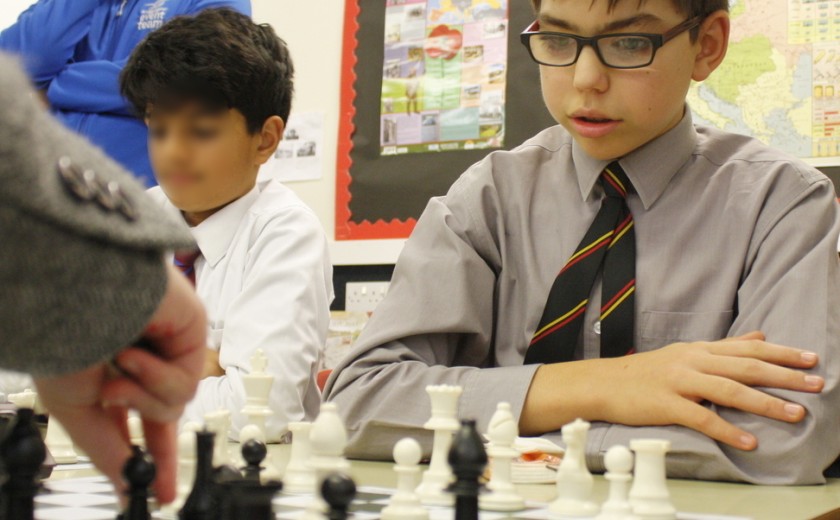As Westbourne House hosted a first round match in the illustrious Sussex Schools’ Under 14 Butler Cup Chess Competition 2018-19 this week, we caught up with Mr Stewart, our Head of Pastoral Care in the Junior Department, about the benefits of chess and how to get involved.
Chess is thriving in schools right now and many education experts are confirming the numerous benefits of playing chess. For many, it represents the perfect antidote to screen time and a hectic and fast-paced modern life.
Mr Stewart said, “With chess, we’re teaching children to slow down and engage their brains. Chess is great for encouraging mindfulness because you need to be absorbed in the moment. Some of our higher ranked players at Westbourne House can take up to 10 minutes to make their move as they ponder a range of strategies and options on the board. It’s hard for beginners to slow down but we remind them that their opponent might have 3 or 4 moves planned in their head and that you have to take time to consider and plan. There are not many opportunities to slow down at school and it’s actually a great thing to see at our chess sessions.”
Twice a week (at break times), our junior children play chess and over 30 children from Y3-8 attend the after-school chess club on Tuesday evenings with Mr Jones from Sussex Chess.
Next term, the school is introducing a chess club in its Pre-Prep for four to seven year olds. It is going to be very lighthearted and fun, covering the basics of chess. We’re also offering drop-in clinics on Monday first break, where our juniors can talk to some of experienced players in Y8 about tactics and good moves.
Mr Stewart has introduced a chess ladder in Year 4 which has created a buzz around chess. Children can challenge anyone up to three places above them on the ladder in order to progress up the ladder. He told us, “The children see the challenge there and really love it. 80% of children in my class can now play chess.”
We have an emotional thermometer in our classroom and we were recently discussing when we feel happy. I thought it was really interesting that two of the children said they felt most happy when playing chess.”
Mr Stewart
Mr Stewart’s top 5 moves for getting started in chess
Move 1: Learn how to set up the board. You need to know how the pieces move and what they are worth.
Move 2: You need to understand the ultimate aim in chess: winning a game by forcing your opponent’s king into checkmate.
Move 3: Learn about strategies and tactics during a game and moving your pieces to the best possible place on the board.
Move 4: You need to learn some of the moves to protect your king, such as castling.
Move 5: Look up some of the fun, basic strategies such as four-move checkmate and dominating the middle of the board.




